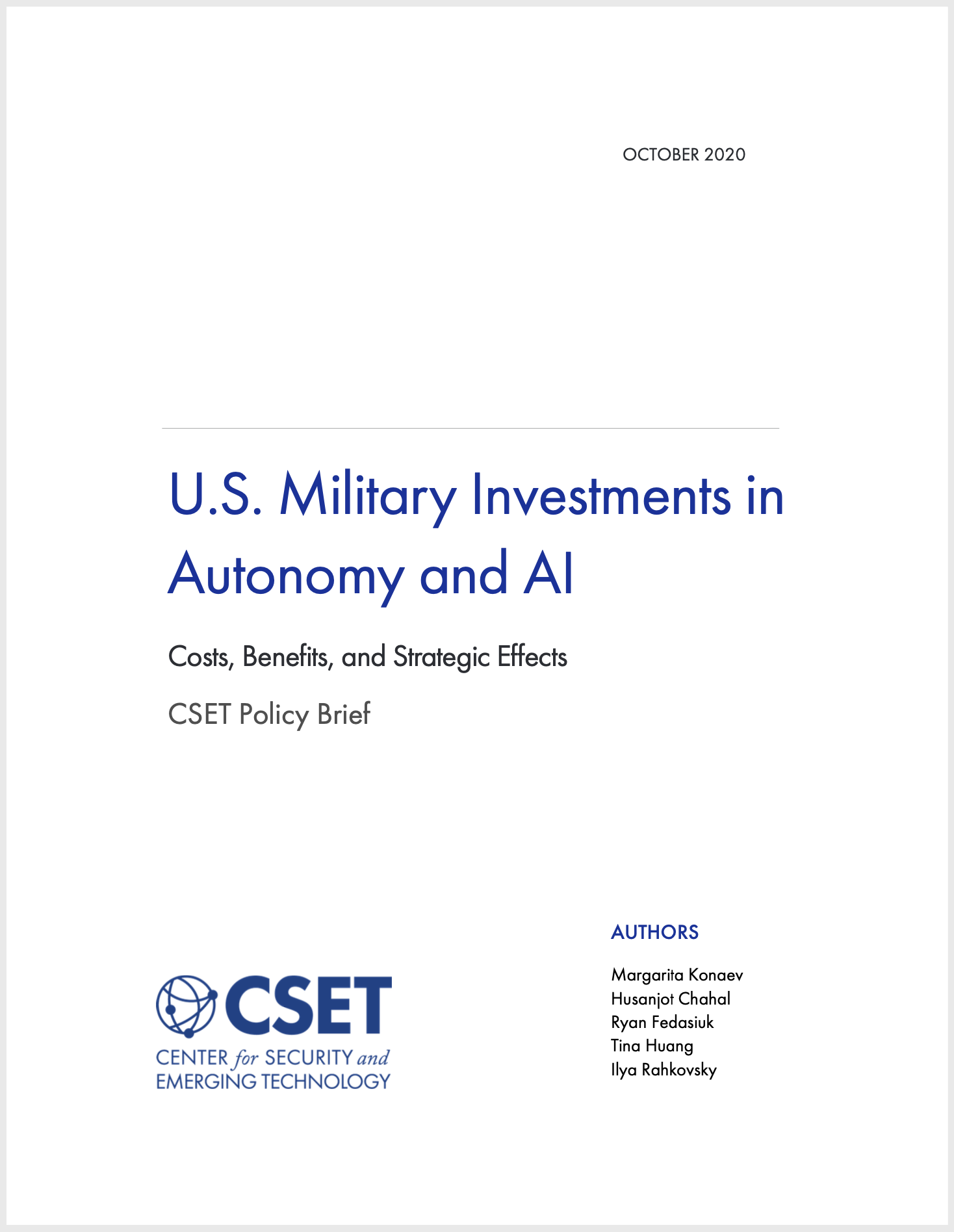The Department of Defense has an ambitious vision for artificial intelligence. And while most federal agencies have seen their research and development funding decline in 2020, DOD’s R&D budget has increased.1 If leveraged correctly, today’s investments in defense research will provide the U.S. military with the AI-enabled capabilities needed to deter adversaries from aggression, fight and win the wars of the future, and cooperate effectively with allies. But where exactly is this investment going? And what benefits and risks might result from developing and fielding autonomous and AI-enabled weapons and systems?
As the strategic competition with China intensifies and allies’ defense budgets face mounting pressure, continued U.S. military investment in emerging technologies is more critical than ever. Policymakers need information about DOD’s investments in AI to conduct proper oversight and ensure these research efforts support broader strategic goals. Moreover, China, Russia, and other competitors are also investing heavily in military applications of AI. Balancing between the urgency of remaining ahead and building safe and secure AI systems will only become increasingly difficult.
As the U.S. defense community implements its vision for AI, CSET offers a two-part analysis assessing the scope and implications of U.S. military investments in autonomy and AI, focusing on three interconnected elements that form our analytical framework:
- The technology element addresses DOD research and development efforts in autonomy and AI;
- The military capabilities element speaks to the speed, precision, coordination, reach, persistence, lethality, and endurance enabled by advances in autonomy and AI;
- The strategic effects element analyzes how these technological developments and capability enhancements may affect key strategic issues—specifically, deterrence, military effectiveness, and interoperability with allies.
The first report, “U.S. Military Investments in Autonomy and AI: A Budgetary Assessment,” centers on the technology element, while the second, “U.S. Military Investments in Autonomy and AI: A Strategic Assessment,” covers the military capabilities and strategic effects portions. Both reports draw on publicly available data from the FY2020 research, development, testing, and evaluation (RDT&E) budget justification books of the Army, Air Force, Navy, Marines, and DARPA. We focus specifically on basic, applied, and advanced research—known jointly as the Science and Technology (S&T) program, which supports the development of new technologies imperative to U.S. military superiority. This analysis is supplemented by an extensive review of strategic and operational literature and scientific research on autonomy and AI.
The following is a summary of both reports, including our assessment of current DOD research investment priorities, trends, and gaps with corresponding recommendations, as well as recommendations for ensuring U.S. military leadership in AI in the short term and the long term.2
U.S. Military Investments in Autonomy and AI: Executive Summary
Download Full Executive Summary- Congressional Research Service, Federal Research and Development (R&D) Funding: FY2020 (Washington, DC: CRS, updated March 2020), 3, https://fas.org/sgp/crs/misc/R45715.pdf.
- Some of the recommendations in this report were also articulated in a report published jointly by the Bipartisan Policy Center and CSET. See Bipartisan Policy Center and the Center for Security and Emerging Technology, Artificial Intelligence and National Security, (Washington, DC: BPC, CSET, June 2020), https://bipartisanpolicy.org/wp-content/uploads/2020/07/BPC-Artificial-Intelligence-and-National-Security_Brief-Final-1.pdf.
